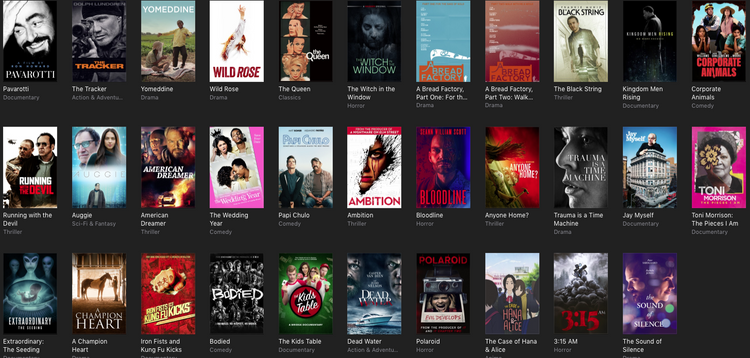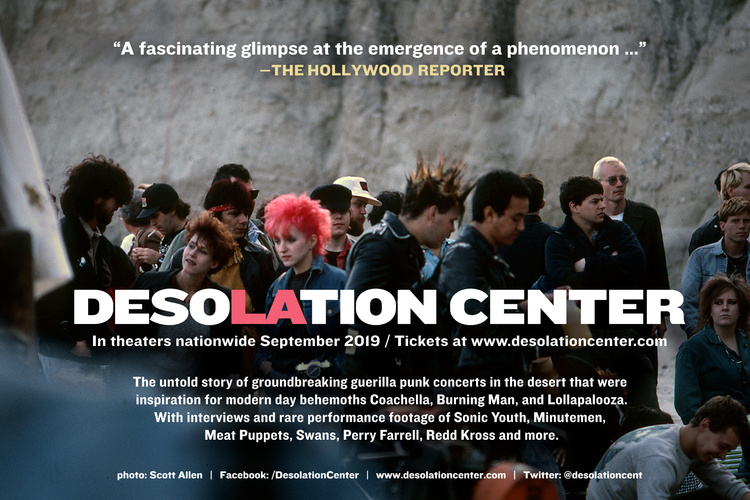Distribution: Aggregators vs. Distributors

In the wake of the seeming demise of Distribber, which was one of the main ways in which filmmakers could get their work up onto major online platforms, it seems that it is still important to indicate the difference between aggregators and distributors – as well as between the two main types of aggregators: aggregators […]
Desolation Center Starts National Theatrical Release

After a great festival run including Slamdance, CPH: DOX, Sheffield International Doc Fest and many more Desolation Center starts the next step of its journey today with the launch of a 30+ city theatrical release. It hits Los Angeles this week and then onward across the US and Canada. I have been advising and working […]
Five Reasons Why “Whose Streets” is Essential Viewing

While at the Sundance Film Festival this past week I had the fortune to to see the premiere of “Whose Streets” by Sabaah Folayan and Damon Davis – produced by Jennifer MacArthur. It was even more fortunate because I was able to view this powerful film on inauguration day and it provided wonderful counterprogramming. I […]
Heading to IDFA

I’m excited to be heading to the IDFA festival and market in Amsterdam today! I’ll be attending BritDocs Global Impact Producers Assembly on Saturday – then doing three presentations over the next 5 days: First on Sunday November 22nd 10am – 11:45 I will be doing a Distribution Crash Course for the newly launched […]
Distribution Case Study – “Finding Hillywood”

Written by Leah Warshawski (Producer/Director) / Introduction by Jon Reiss I recently wrote a two part article featuring four documentary filmmakers who pursued hybrid releases with their films and who were generous enough to share the real data from their films’ releases – Transparency: Four Filmmakers Give Up the Gold Pt1 and Pt 2. Upon reading […]
Guest Post: Top 5 Webseries Tips
I’ve been talking about serialized content for some time now – and how filmmakers need to look at this as a way to engage with new methods of distribution and marketing for their work. This can take many forms – but the most obvious are episodic television and web series. I asked Carrie Cutforth the […]
Creating Innovative Merchandise
Its the IFP Film Week in NYC where I just was for the IFP Lab and the new IFP PMD Lab – so with that in mind – I am posting my new clip about merchandise and an intro to innovative merchandise.
Creating a Unique Strategy For Your Film
Today’s video concerns the fundamental principle of how every film is different and needs a unique marketing and distribution plan. To create this plan, filmmakers need to examine: 1. Their Goals 2. Their Film 3. Their Audience 4. Their resources. I spend a little extra time on goals again talking about “Ride the Divide” and […]
Distribs, theaters take on new media
Check out this interesting new article in Variety on the ever-changing world of film distribution. Yours truly was one of Gregg’s sources. Firstrun screenings have become events by Gregg Goldstein Can kung-fu fighting monks, cave screenings and feral, caged Santa Clauses save the movie biz? Exhibitors sure hope so. Around the globe, theaters and distribs […]
Five Question Q+A with Jon Reiss for NAMAC
I recently did a short Q+A for Rachel Allen with the National Alliance for Media Art + Culture (NAMAC). NAMAC is an invaluable resource of independent film, video and multimedia organizations, and I recommend everyone checks them out. Five Question Q+A with Jon Reiss by Rachel Allen Meet Jon Reiss. Jon is a filmmaker (Bomb […]